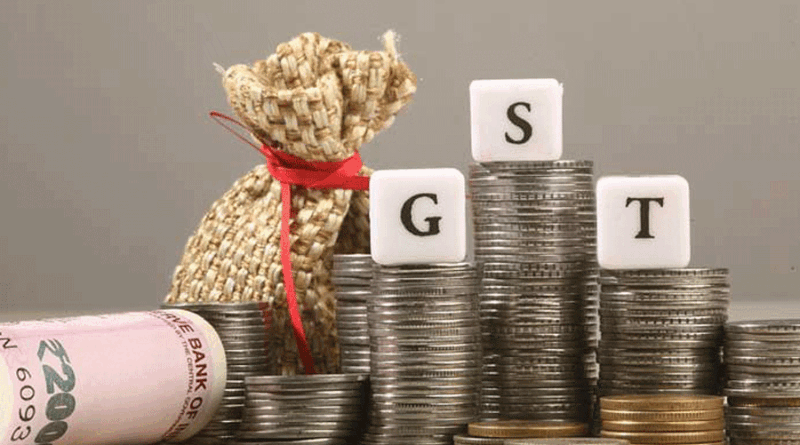Bengal risks deeper fiscal strain as GST rejig slashes state revenue lifeline
With 62%GG
Kolkata, September 08, dmanewsdesk: Bengal’s reliance on state GST revenue and central devolution of taxes for overall revenue mobilisation may leave it more exposed than many other states to the potential revenue loss after GST rate rationalisation, heightening the risk of fiscal strain.
The state earned 62.3 per cent of its revenue receipts in FY25 from SGST and central devolution (CD), according to the revised budget estimate presented at the state Assembly in February.
Bengal’s SGST collection and its share of Union taxes and duties stood at ₹45,872 crore and ₹96,010 crore, respectively, in FY25, while the total revenue receipts were at ₹2,27,591 crore. The state’s dependence on these two major sources of revenue is projected to come down marginally to 59 per cent in FY26 if it does not fall short of the targeted growth in mop up this year.
According to an analysis by credit rating agency Icra, Bengal stands 4th among 28 states in terms of its share of SGST collection and CD in overall revenue receipt.
“States dependent more on SGST and central devolution as a percentage of their total revenue receipts are likely to be impacted by the revenue forgone due to the proposed GST rate rationalisation,” Aditi Nayar, chief economist of Icra, observed.
Lion’s share
According to Icra’s calculation, states are likely to share a 70.4 per cent burden of the potential ₹48,000-crore revenue forgone. The net loss to the Centre is estimated to be ₹14,200 crore while the states’ share is pegged at ₹33,800 crore, according to the rating agency.
Amit Mitra, principal chief adviser to the chief minister of Bengal and the finance department, however, is not willing to buy the ₹48,000-crore ‘fiscal implication’ figure quoted by the Union revenue secretary Arvind Shrivastava.
“The loss will be much more than ₹1 lakh crore if you add the refund that industry will seek as input tax credit due to the inverted duty structure that many items will face after the rejig,” Mitra said.
Giving an example of an oximeter, where the device used for measuring oxygen level in the body is put in the 5 per cent GST rate category, while the majority of the inputs (steel and plastic) remain at 18 per cent, he argued that industry would seek ITC refund of 13 per cent in this case, as the GST law provides for it.
States that manufacture and also consume are likely to face a bigger share of the ITC claim, especially if the raw materials are procured from there.
Impact on states
In the FY26 budget estimates, the combined SGST collections of the 28 states were expected to increase by a healthy 22.2 per cent to ₹10.8 lakh crore from the year-ago level. However, during April-August FY2026, the SGST collections have increased by a modest 5.8 per cent, suggesting that the growth budgeted by the states was highly optimistic.
As weighted average GST rate is likely to fall to a single digit from 11.64 per cent in FY24 after the rate rejig, the actual SGST collections in FY26 will trail the budgeted level by a sizable extent. This will leave states such as Bengal with a difficult choice. Bengal’s outstanding debt is projected to rise to ₹7,71,670 crore in FY26, leading to total loan repayment of ₹81,510 crore.
“It will depend on each state’s fiscal situation and choices whether to bulk up on loans or cut down on expenditure or explore generating alternative revenue to mitigate the impact of the rate rejig,” Nayar observed.
Mitra said the cut in GST rates, unless the Centre finds a way to compensate the states for the loss, will have unintended consequences on the polity. “While the price of soap or shampoo may come down a bit, the significant loss of revenue to states would negatively affect the fundamental needs of life of the common people, like health, education, infrastructure and the empowerment of women and girl child,” Mitra argued.
Bengal finance minister Chandrima Bhattacharya had earlier claimed that the state may lose ₹10,000 crore revenue.
Mitra’s solution
The former Bengal finance minister suggested that the Centre should compensate either by increasing GST on sin goods from 40 per cent by amending the law, or share a part of the cess the Centre collects from petroleum products with the states.
“The buoyancy in the economy, which the Modi government says will offset the revenue loss, is not going to manifest from September 23. There will be revenue loss in the transition. States will lose as a result of that. They must be compensated,” he demanded.
Source: The Telegraph online




